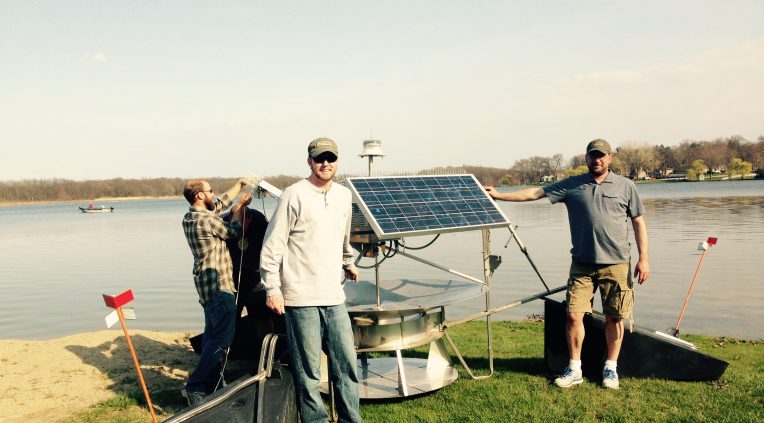



























Northwater implemented a 2-year study to evaluate the effectiveness of using aeration and bio-augmentation to reduce organically rich sediment accumulation. Accumulation of sediment is a primary concern of residents and recreational users of the lake. Between 1990 and 2016, up to six feet of sediment accumulation occurred, primarily of organic composition. This led to the expansion of weed beds, and a decline in fish populations and diversity. Low dissolved oxygen concentrations at the sediment interface were recorded in the fall of 2015, suggesting an unhealthy benthic environment unable to digest accumulating organic material. The study was executed to evaluate the effectiveness of aeration technology and microbial augmentation at managing organic sediment accumulation.
Study zones were established to monitor dissolved oxygen and sediment conditions; these zones included microbial augmentation only, aeration with and without microbial augmentation, and a control zone. A SolarBee™ mechanical circulating aerator was installed and Biodyne® Environoc 301 was injected monthly into the sediment to introduce benthic microbes. Data loggers were installed and monthly monitoring of sediment was performed. The results from both years suggest that microbial augmentation as a sole practice had limited effectiveness due to the poor dissolved oxygen conditions. The most definitive measurements of sediment reduction occurred where both aeration and microbial augmentation were applied.
This applied research project determined that bio-augmentation is only effective with aeration and that rates of sediment reduction are such that this method is only appropriate as a maintenance practice.
We are happy to answer any questions you might have!